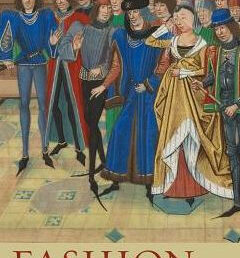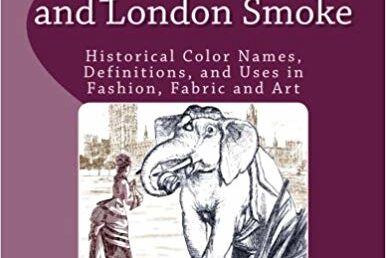Book Review: Illuminating Fashion
by Cynthia Howell, First published for the September/October 2011 issue of Finery Are you looking for inspiration for your medieval gown? Has Google failed to yield images of extant garments? It’s time to turn to an unusual source: medieval illuminations. Illuminations provide a wealth of information on the appropriate types of fabrics and trims. Accessories often play a prominent role. […]
Beyond the Muslin Gown
by Virginia Solomon, First published for the September/October 2011 issue of Finery Too many times have I heard this statement, “I can’t wear Regency dress, I don’t have the body for it.” While it is true that many Regency illustrations depict willowy young things in clinging white gowns, there are many existing gowns in museum collections and illustrations, that depict […]
Fashioning the Fit: the Evolution of the Doublet and Hose
by Frances Classe, First published for the May/June 2011 issue of Finery Costuming historians generally agree that tailoring techniques shifted significantly towards the middle of the 14th century. This shift towards more closely fitted garments and away from garments patterned by geometric forms (rectangles, trapezoids, triangles, etc.) is explained by some as an adoption of military under-dress for civilian usage. […]
Strut Your Tut
Eastern Influences on 1920’s Fashion by Carol Wood, First published for the March/April 2011 issue of Finery The 1920s was characterized by exploration, experimentation and invention. This holds true for fashion in particular: No more restrictive corsets, experimentation in dress was socially acceptable, and more women earned money to afford the new fashions. Not only did hemlines run up and down […]
Carnival in Venice
The Costume IS the Performance by Shelley Monson, First published for the January/February 2011 issue of Finery Today we use the word “carnival” to mean much the same as circus, but in the past it referred specifically to the celebration of the holiday Shrove Tuesday, the last day before Lent. Shrove Tuesday, known as Mardi Gras or Fat Tuesday in […]
Book Review: Elephant’s What?
by Betsy Hanes Perry, First published for the September/October 2010 issue of Finery Elephant’s Breath and London Smoke: Historic Colour Names, Definitions, & Uses, edited by Deb Salisbury, is a sorely needed resource; anybody who’s spent time reading old fashion magazines has been frustrated by descriptions such as “a dress of serpent-gray silk”, which would have been transparent to the […]
Mad Style
by George McQuary, First published for the July/August 2010 issue of Finery The “Age of Optimism”, 1960-1963, was the last gasp of formality in everyday men’s wear. During the Eisenhower and Camelot/Kennedy eras, men wore slim two- or three-piece suits, slim-fitting white shirts, skinny ties with tie bars and pocket squares. Art Deco-era suits can easily pass for mid-century, as […]
Let Them Wear Muslin!
by Feather Tippets-Rosica. Originally published in the May / June, 2009 issue of Finery The transition from the elaborate gowns of the eighteenth century, worn over rigidly boned stays and hooped petticoats, to the soft muslin gowns associated with the heroines of Jane Austen’s novels was not a sudden event sparked by the French Revolution. Marie Antoinette started it well […]
Fabulous! The Art of Being an Historical Fashion Icon
by Lindsey Eastman. Originally published for the March / April 2009 issue of Finery. How do you stand out in a sea of French Hood and giant turn back sleeves? Or differentiate yourself from every other woman in a sacque-back gown and lace? How do you make a bustle gown the toast of the room? These are the questions that […]
Henrican (Tudor) Underthings
by Kimiko Small. Originally published in the January / February 2009 issue of Finery. When I see people reproduce Henry VIII era (1509-47) ladies costumes, they usually use what they already have for undergarments, which are most often from the later Elizabethan era (1558-1603). While there are similarities, it works best to wear Henrician undergarments under that era’s gowns. Smock: […]


















